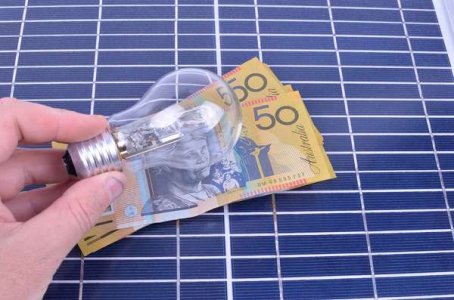Australian Energy Regulator unveils draft bill prices, sparks hope for East Coast households
- Replies 13
As we all know, the cost of living has been a hot topic across Australia, with energy prices being a significant concern for many.
However, there's a glimmer of hope on the horizon for our East Coast residents, as the Australian Energy Regulator (AER) has recently unveiled its draft Default Market Offer (DMO 6) for the 2024-2025 period, which could lead to lower power bills for many households and businesses.
The DMO acts as a price cap, limiting how much energy retailers can charge customers on default plans in New South Wales, South Australia, and parts of Queensland.
This is particularly relevant for those who haven't negotiated a separate contract with their energy provider, or haven't switched to a more competitive market offer.
‘At this time, it is estimated that price changes for all residential and small business customers on standard retail plans will be less than the rate of inflation,’ the AER said.

According to the AER's draft proposal, the majority of residential customers could see their bills decrease by 0.4 per cent to 7.1 per cent.
While this might not sound like a huge amount, every cent counts when it comes to managing household budgets.
For those who might see an increase, the rise is expected to be modest, between 0.9 per cent and 2.7 per cent, which is still below the current rate of inflation at 4.1 per cent.
Small businesses, the backbone of our local economies, are also set to benefit, with most seeing a potential decrease in their energy bills ranging from 0.3 per cent to 9.7 per cent.
AER Chair Clare Savage said, ‘We know that economic conditions have put pressure on many Australians, and the increases in electricity prices over the past two years has made energy less affordable for many households.’
‘In light of this, the AER has, in this decision, placed increased weight on protecting consumers.’
She also said that the draft determination aims to strike a balance, allowing retailers to recover costs and make a reasonable profit, with a proposed retail margin of 6 per cent for residential plans and 11 per cent for small business plans.
‘These are higher margins than we see in other markets, such as Victoria, where strong competition remains,’ she added.
Victoria's Essential Services Commission is anticipated to unveil its proposal on Tuesday, March 26.
Federal Energy Minister Chris Bowen has welcomed the draft default market offer.
‘Small businesses (are) getting the biggest reductions, which is welcome,’ he said.
‘We’ve got a long way to go though... Nobody's suggesting that this is over, or the cost of living pressures don’t continue to exist as they do around the world.’
It's worth noting that the AER's draft comes after extreme peaks in wholesale electricity prices in 2022.
Thankfully, these prices have since stabilised, although this has been somewhat offset by increased network costs.
Savage also highlighted decreases in the prices of retailers' competitive market offers, which fall below the default offer.
‘The median market offer has dropped by between 1 per cent and 5 per cent across most electricity distribution zones since December 31, 2023,’ she stated.
‘The most competitive market offers are now 18 per cent to 23 per cent below the DMO price.’
Energy retailers are mandated to inform customers if a better deal is available, at least every 100 days, and this must be clearly stated on the front page of their bills.
The AER's final offer determination is set to be delivered in May after public consultations, with the new prices expected to take effect in July.
However, despite this exciting news, some experts are not optimistic about the expected decrease in electricity costs.
 Are you planning to review your energy plan in light of these potential changes? Share your thoughts and advice in the comments below—your insights could help fellow members save on their energy bills!
Are you planning to review your energy plan in light of these potential changes? Share your thoughts and advice in the comments below—your insights could help fellow members save on their energy bills!
However, there's a glimmer of hope on the horizon for our East Coast residents, as the Australian Energy Regulator (AER) has recently unveiled its draft Default Market Offer (DMO 6) for the 2024-2025 period, which could lead to lower power bills for many households and businesses.
The DMO acts as a price cap, limiting how much energy retailers can charge customers on default plans in New South Wales, South Australia, and parts of Queensland.
This is particularly relevant for those who haven't negotiated a separate contract with their energy provider, or haven't switched to a more competitive market offer.
‘At this time, it is estimated that price changes for all residential and small business customers on standard retail plans will be less than the rate of inflation,’ the AER said.

The Australian Energy Regulator released its draft Default Market Offer for 2024-2025. Credits: Shutterstock
According to the AER's draft proposal, the majority of residential customers could see their bills decrease by 0.4 per cent to 7.1 per cent.
While this might not sound like a huge amount, every cent counts when it comes to managing household budgets.
For those who might see an increase, the rise is expected to be modest, between 0.9 per cent and 2.7 per cent, which is still below the current rate of inflation at 4.1 per cent.
Small businesses, the backbone of our local economies, are also set to benefit, with most seeing a potential decrease in their energy bills ranging from 0.3 per cent to 9.7 per cent.
AER Chair Clare Savage said, ‘We know that economic conditions have put pressure on many Australians, and the increases in electricity prices over the past two years has made energy less affordable for many households.’
‘In light of this, the AER has, in this decision, placed increased weight on protecting consumers.’
She also said that the draft determination aims to strike a balance, allowing retailers to recover costs and make a reasonable profit, with a proposed retail margin of 6 per cent for residential plans and 11 per cent for small business plans.
‘These are higher margins than we see in other markets, such as Victoria, where strong competition remains,’ she added.
Victoria's Essential Services Commission is anticipated to unveil its proposal on Tuesday, March 26.
Federal Energy Minister Chris Bowen has welcomed the draft default market offer.
‘Small businesses (are) getting the biggest reductions, which is welcome,’ he said.
‘We’ve got a long way to go though... Nobody's suggesting that this is over, or the cost of living pressures don’t continue to exist as they do around the world.’
It's worth noting that the AER's draft comes after extreme peaks in wholesale electricity prices in 2022.
Thankfully, these prices have since stabilised, although this has been somewhat offset by increased network costs.
Savage also highlighted decreases in the prices of retailers' competitive market offers, which fall below the default offer.
‘The median market offer has dropped by between 1 per cent and 5 per cent across most electricity distribution zones since December 31, 2023,’ she stated.
‘The most competitive market offers are now 18 per cent to 23 per cent below the DMO price.’
Energy retailers are mandated to inform customers if a better deal is available, at least every 100 days, and this must be clearly stated on the front page of their bills.
The AER's final offer determination is set to be delivered in May after public consultations, with the new prices expected to take effect in July.
However, despite this exciting news, some experts are not optimistic about the expected decrease in electricity costs.
Key Takeaways
- The Australian Energy Regulator released its draft Default Market Offer for 2024-2025, proposing a price cap on energy prices in NSW, South Australia, and parts of Queensland.
- According to the draft offer, most residential customers could see their bills decrease by 0.4 per cent to 7.1 per cent, while some may see an increase, but below the 4.1 per cent rate of inflation.
- Most small business customers can expect their electricity bills to fall between 0.3 per cent and 9.7 per cent; however, some may experience a modest increase of about 0.7 per cent.
- Wholesale electricity prices have stabilised since 2022, and the most competitive market offers are now 18 per cent to 23 per cent below the Default Market Offer price, with retailers required to notify customers every 100 days if a better deal is available. The final offer determination will be announced in May, and take effect from July.







